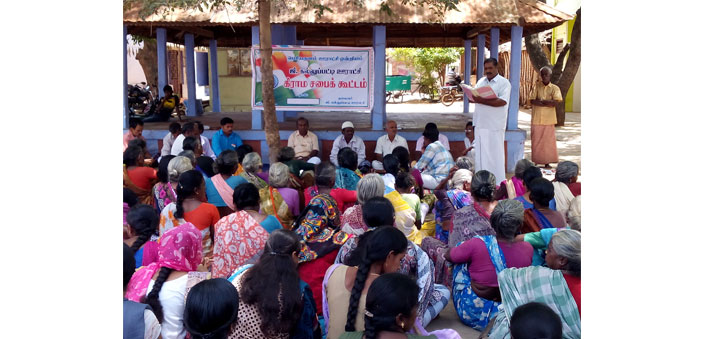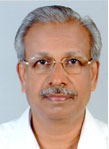Decentralisation is a new governance mechanism initiated not only in India, but also in more than 60 countries in the world through different ways, from amending the Constitution of the country, to passing an executive order to create an institution of governance at the grassroots.
Among the major aspects, decentralisation draws the attention of the bilateral and multilateral development agencies, as it raises hope of addressing many of the development issues, which have not been effectively addressed by the federal and regional governments, not only in India, but also globally. The perceived potential of decentralisation prompts development agencies to incentivise the federal and state governments to promote decentralisation in the developing countries.
The India story
In India at present, democratic decentralisation has come through a process of constitutionalisation. It has raised hope among different stakeholders that it would deepen democracy, achieve economic development and social justice at the grassroots, and ultimately, it would result in empowering the people, mostly the poor, through their participation in governance and development. India is a vast country and the total number of representatives involved in the decision making process and in governance, is in the order of three million. It surpasses the total population of some of the developed countries. If these representatives are totally engaged in governance, the expected change and transformation could be phenomenal. With this expectation, donor agencies have evinced keen interest in decentralisation in India. Twenty years after the decentralisation process began, the moot question we need to ask is, has it created the expected impact in governance, society and the lives of the people at the grassroots, and if not, why?
Democratic decentralisation as a major governance reform initiative was undertaken by the Government of India (GoI) for a larger purpose. It is the result of a major reform initiative taken up in the world in the beginning of 1970’s, as many of the countries in the world witnessed the failure of centralised governance mechanism introduced after World War II. When the leaders of the countries were looking for an alternative mechanism to the existing governance, decentralisation came handy to handle many of the problems of the people at the community level, by involving the people who are affected. Thus, it gained prominence and acceptance from all sections of the society, barring those who were in power both in the central and state governments. In India, decentralisation came along with globalisation of the economy. This process is a fairly complex story in India. It holds out many promises and to fulfill these promises, sufficient enabling conditions have to be created on the ground. To enable the masses to make use of decentralisation, state governments have to take an array of steps sequentially, systematically and organically.
The Ministry of Panchayati Raj, GoI, has made earnest efforts to evaluate annually the devolution process of the states and incentivising them according to their level of devolution of powers. This has not created any impact in the devolution process of the states. People who are in the state government are not evincing keen interest in transferring power down to the local bodies. Essentially, they look at it as a ploy to weaken the state. The reality is, however weak it may be, local governments exist and function and they bring changes and transformation.
The challenges
As per studies conducted for this purpose, there is no doubt that corruption has been reduced in the development sector considerably after decentralisation of power. Yet, the number of people involved in corruption has increased. Many of the core principles of the 73rd and 74th Amendments to the Constitution of India have not been put into practice. The state governments, barring a few, are reluctant to give powers to local governments. Constituting District Planning Committees is a core initiative, but it has not been done. Constituting State Finance Commissions and acting on the recommendations of the Finance Commission are the essential responsibilities of the state governments, but they have not been taken seriously. They are actually in violation of the Constitution of India. Neither the central government, the judiciary or the civil society have taken note of it and acted on it. The Centre appears to be sympathetic, as the Ministry of Panchayati Raj has been acting proactively towards Panchayats and yet, the other ministries of the central government are bypassing the Panchayats, while implementing their schemes and programmes on the ground. From the research studies it is inferred that most of the state governments have refused to devolve funds, functionaries and functions to the Panchayats. The devolution process has been made much more complicated.
The Panchayat representatives face a plethora of problems in governance and administration. Their capacity has to be enhanced through a process of capacity building. But it does not take place effectively and professionally. Training infrastructure has been developed, but quality training is lacking. Despite some progress in the delivery of service and deepening of democracy, the states are unwilling to share power with the local governments. As a result, many donor agencies have moved away from decentralisation activities, as have academic scholars. Panchayati Raj is a state subject which has to be looked at from the perspective of states in the context of cooperative federalism. Realistically speaking, decentralisation has to be implemented only by the state governments. The Justice Venkatachalaya report has recommended certain constitutional reforms pertinent to the 73rd and 74th Amendments to the Constitution of India. Later, the centre-state relations committee has made certain recommendations on the same subject. Following the above, the Second Administrative Reform Commission has made more realistic and actionable recommendations based on the performance of the institutions. It is a pity that none of the secretaries from GOI have put out a road map to implement the recommendations of this commission in their respective ministries. When the central government is not able to consider its own recommendations, how can one expect the state governments to implement the recommendation of the committee?
The very character of democracy has been changed because of the creation of Gram Sabha for participation of citizens in the process of governance and development, but it has not been supported by creating ground rules for the conduct of the Gram Sabha. Rules for participation, structure for participation have to be created for enabling the poor to participate in Gram Sabha meetings. The deliberative aspect of this democracy is missing. To tap the full potential of Gram Sabha, a few ground rules and enabling conditions have to be created. These steps have to be taken by the state governments.
A Gram Sabha member, Mariamma, 62, of Karisalpatti Gram Panchayat in Dindigul District, Tamil Nadu, made an observation to my students during their field work, which is reproduced here:
“Many of the government schemes are implemented by various departments and agencies in our village. Who is in which office and implementing which scheme of the government, is not known to us. So, I used the Gram Sabha to track this information. This was possible because the government observer visited the Gram Sabha to explain to us. One of my close relatives had not received the old age pension for several months, and she was not able to move out from her house. When I raised this issue in the Sabha, the Gram Panchayat President took responsibility to get details from the concerned office. As a result, she got the pension.
I am a wage earner in MGNREGA (Mahatma Gandhi National Rural Employment Guarantee Scheme), and I was not sure of getting my wages on time. Hence, I raised this issue in the Gram Sabha meeting and I got a reply. Another problem I, an unskilled labourer working on a farm faced, was that the Panchayat operated drinking water supply when I and many other women would be away at work. I raised this issue in the Gram Sabha and the timing of drinking water supply was changed to suit our requirement. To me it is a Parliament.”
Governance and administration are always of a complex nature in India, and they need to be simplified to enable citizens to participate in the process, as stakeholders. Barring a few states, there is no administrative manual for Panchayat administration. The absence of an administrative manual will pave way for corruption and domination of officials over elected representatives. It is also important that the elected representatives have to be trained in governance and administration. Sadly, there is no training policy to build the capacity of the elected representatives in India. It is also important to study how elected women representatives have performed at the grassroots and if they haven’t, then why? It has been demonstrated unequivocally that there is a significant impact of reservation of seats for women in local governance and despite several barriers and limitations, they have performed well.
The way forward
Even after 20 years of the new experiment, there is no platform for proper policy advocacy for decentralisation at grassroots. The research conducted so far on decentralisation, development at grassroots and democratisation of the communities is scanty, sporadic and region specific. Pan Indian studies are rare. No worthwhile academy has been established in India to conduct studies on the above subjects.
Muniasamy, a Gram Sabha member of Alamarathupatti Gram Panchayat in Dindigul District, Tamil Nadu, made an observation when our students went for field work:
“Gram Sabha is a best place to demonstrate equality in an unequal society. Caste hierarchy is a reality in rural areas. Untouchability is yet another reality that operates in different forms in the villages. The Gram Sabha is an instrument to change the mindset of the people. A dalit cannot sit along with the higher caste persons at any social function in the village settings.
But in the Gram Sabha, I find that equality at least in sitting along with them. I regularly attend the Gram Sabha meeting only to enjoy that equality in the village by sitting with higher caste men and women. Everybody has to sit only on the floor. Further, I can ask questions in the Gram Sabha. Questioning a higher caste person in a village is unacceptable. But in Gram Sabha, being a President, he or she has to respond to everyone’s questions. I raise many questions and I get answers to all. I enjoy sitting with a higher caste person. It gives me joy and happiness. Being a dalit, I really value this”.
By mobilising the masses for participation in governance at grassroots, a new polity could be evolved. To perform the above task, an academy has to be started and it has to work on the issues of decentralised governance, development, administration and their implications in the transformation of the rural communities and societies. A new training policy has to be evolved for preparing leaders to head local bodies. The existing training institutions have to be converted into new leadership schools. They should be kept out of state government control and should be autonomous. They can even be attached to universities. In every state, an administrative manual for local governance must be prepared in the respective regional language. This is very essential for ensuring accountability at the Panchayat level. In the absence of a planning machinery at the ground, a detailed guideline can be prepared either by the state government or central government, as to how educational and research institutions can help the Panchayats to prepare a development plan. For rural development policy making and planning, a reliable data base is the need of the hour.


 [/column]
[/column]